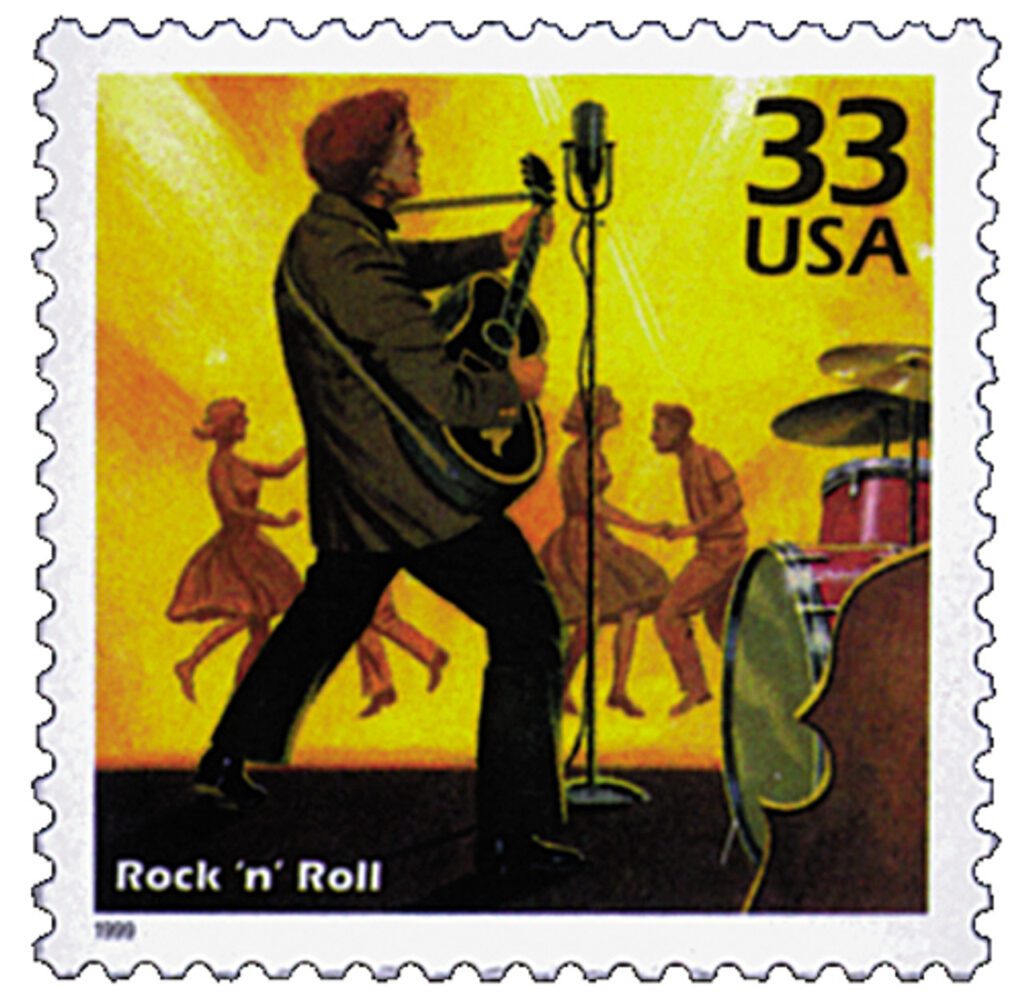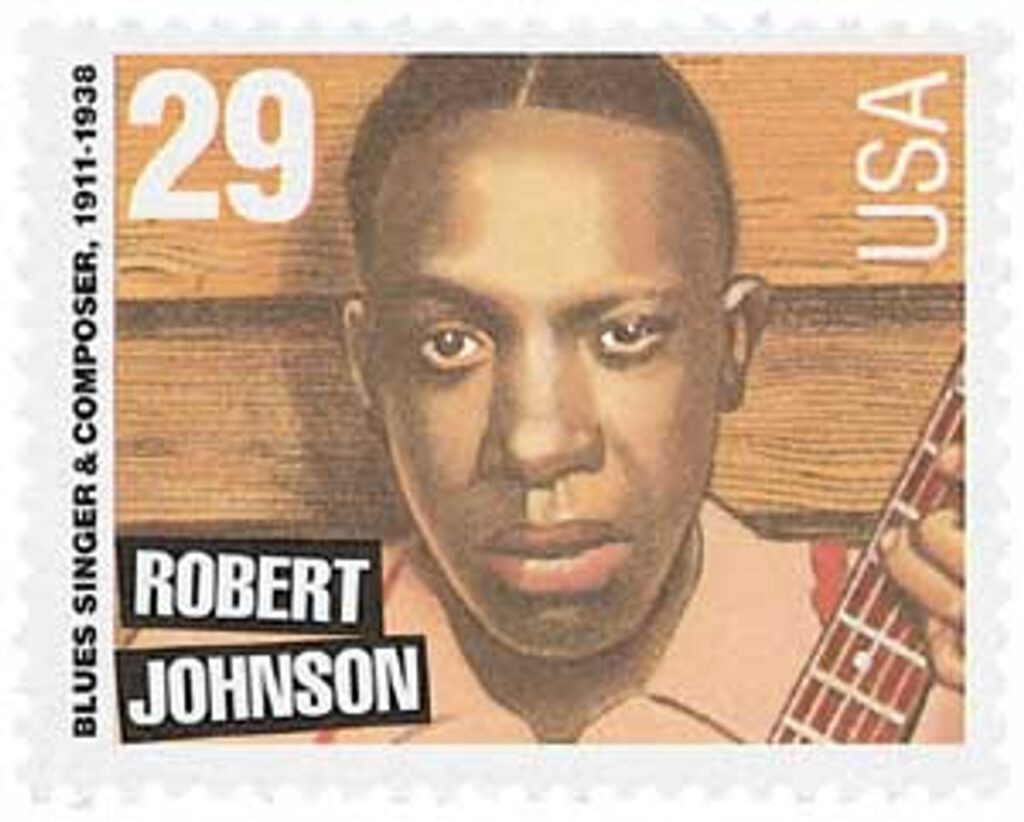On January 23, 1986, the first group of musicians was inducted into the Rock and Roll Hall of Fame.
The Rock and Roll Hall of Fame was the brainchild of businessman, Atlantic Records co-founder, songwriter, and philanthropist Ahmet Ertegun. He, Rolling Stone publisher Jann Wenner, and several record executives established the Rock and Roll Hall of Fame Foundation on April 20, 1983.
In the coming years, they began plans for the physical museum. They considered several cities with ties to rock history – New Orleans, Memphis, Chicago, San Francisco, and New York. They ultimately settled on Cleveland, Ohio, the place where disc jockey Alan Freed coined the phrase “rock and roll.”

As plans for the museum progressed, the organizers wanted to start honoring rock legends. So on January 23, 1986, they held the first induction ceremony at the Waldorf-Astoria in New York City. The first inductees were all pioneers in the world of rock and roll – Chuck Berry, Elvis Presley, Little Richard, Fats Domino, Buddy Holly, the Everly Brothers, Ray Charles, James Brown, Sam Cooke and Jerry Lee Lewis.
There were also non-performer inductees – Sun Records founder Sam Philips and DJ Alan Freed. The museum also inducted Early Influencers Robert Johnson, Jimmie Rogers, and Jimmy Yancey. Additionally, Columbia Records’ John Hammond, who had discovered Billie Holiday, Aretha Franklin, Bob Dylan, and Bruce Springsteen, received the museum’s first Lifetime Achievement Award.
A special guest inducted each honoree. The Rolling Stones’ Keith Richards delivered a heartfelt speech about Chuck Berry; Steve Winwood honored James Brown; Quincy Jones inducted Ray Charles; Herb Alpert inducted Sam Cooke; Billy Joel honored Fats Domino; Neil Young inducted the Everly Brothers; John Fogerty honored Buddy Holly; Hank Williams, Jr., inducted Jerry Lee Lewis; Roberta Flack inducted Little Richard; and John Lennon’s sons inducted their father’s hero, Elvis Presley.
After the ceremonies, an all-star jam took over the stage with performances by the living inductees, Steve Winwood, John Fogerty, Billy Joel, and ZZ Top. They played songs by the inductees as well as other classic rock hits well into the night.
Nearly a decade later, the museum officially opened on September 2, 1995, with performances by Chuck Berry, Bob Dylan, Al Green, Jerry Lee Lewis, Aretha Franklin, Bruce Springsteen, Iggy Pop, John Fogerty, John Mellencamp, and many others. While the museum is located in Cleveland, most of the induction ceremonies (26) have been held in New York City, while two have been in Los Angeles and four in Cleveland.
Click here for more about the Rock and Roll Hall of Fame.
Click here to see what else happened on This Day in History.






What a fine research job you did on the Rock and Roll Hall of Fame article. Thank you
The Rock and Roll Hall of Fame was a great idea, but it lost its identity
completely when the inducted Madonna. She had as much to do with
R & R as she had to do with Physics. Then they compounded it by inducting
Rap and Hip-hop acts. It is no longer the R & R HOF, but any music HOF.
I don’t see Frank Sinatra, Perry Como or Dean Martin so why Madonna?
I Agree. I was looking for Howlin Wolf but instead found Tupac Shakur.
Great info on the origins of the R&R HOF. But kind of in agreement with Kenneth, music changes greatly over time and generally tied to an era. For Rock & Roll, what happens when some of the last semi petrified acts are no longer? The originators had a great idea, but may have just missed the bigger picture of a Music Hall of Fame where they could honor all styles of music. So what have we got now today? Rock and Country Halls of Fame? But regardless, still a great way to discuss history through the use of stamps.
I wondered if anyone felt that way about the evolution of the R&R hall of fame. As a child of the 50’s and teenager of the 60’s. I had seen and heard it all from the beginning. I was ecstatic about the idea of the h.o.f.. It meant that the music of our generation had come of age, was universally recognized, and was being honored for being what it is. As time went on and some of the inductees did not fit the category I questioned the rationale of those who initially had the original vision. R&R was big enough as a genre that it didn’t need to expand and incorporate all types of music of the times. Hard rock and heavy metal are not necessarily rock and roll but are direct extensions of the art form. Motown coexisted and provided us with crossover versatility artists and unquestionably fit the category. As music eras go, previous and subsequent similarities would be categorized as “adaptation”. An example of this is Marvin Hamlisch’ musical score and soundtrack from “the Sting”. The ragtime era had come and gone and consequently new music from that era was adaptation. The point of this is that rap, country, bluegrass, classical and the music of artists known as crooners, do not fit the category and should not be considered for the R&R hall of fame. Don’t lose your identity.
I also witnessed the birth of Rock & Roll, and am very disappointed in the watering down of the great music pioneers by including other genres of music,(one that does not even fit the category at all, RAP…talking fast with a bass line does not constitute music, period) Being a musician myself ,I visited the hall many years ago ,and thoroughly enjoyed the reliving of my teenage years through the exhibits of the great influences of my life. But ..alas it has been ruined by the inclusion of some of the worst forms of societal rebellion disguised as contributions to the idea that Rock & Roll ,albeit a form of young rebellion at the time ,now should include violence and hate in it’s message! I for one will never visit again. I will just stay at home and enjoy listening to real Rock & Roll Music, on my prehistoric 45 playing Jukebox!
Love these informational articles at this sight. Music is historically important. I listen to every genre. Everyone have a blessed day!